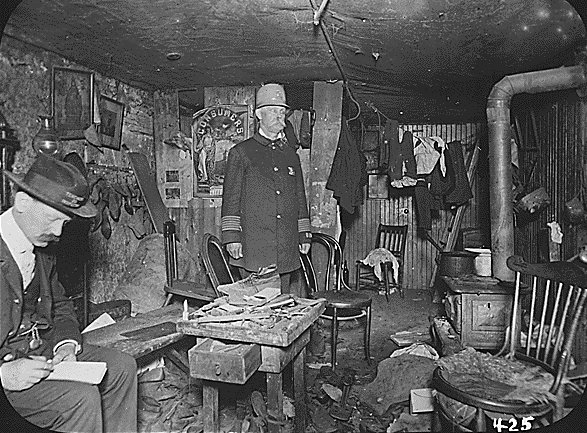From The Peopling of New York City
In the early to mid-1850s, the death rates of Irish-born Americans were 60% of that of the natives in New York City. Most of these deaths were related to work, especially among the male population. Since the majority of newly arriving Irish immigrants had little capitals, they had to work long hours on tedious and even dangerous tasks in order to pay for the rents and foods. The Irish man, who was usually the sole supporter of his family, often had low life expectancy due to his physical labor. In addition to the long hours, the jobs that poor Irish (both men and women at times)took on could be very dangerous since they were mostly unskilled laborers.[1]
Besides their ways of living, the slums that these Irish immigrants lived in for more than half a century (from the early 1800s to early 1900s) were extremely crowded and unsanitary. Deaths of children and the elderly, therefore, were usually the results of diseases and infections that could have easily been treated otherwise. In fact, the commonest cold could become an serious and life-threatening epidemic in such communities. Starvation and malnutrition were also major contributors of deaths in the Irish neighborhoods: in 1850, the city had lost 21.1 per thousand of Irish birth, probably due to sickness or the unhealthy diets of the mothers.[2]
References
- ↑ Lee, Joseph J., and Marion R. Casey. Making the Irish American: History and Heritage of the Irish in the United States. New York: New York UP, 2006. 230-231.
- ↑ Anbinder, Tyler. Five Points: The Nineteenth-century New York City Neighborhood That Invented Tap Dance, Stole Elections, and Became the World's Most Notorious Slum. New York: Free P, 2001. 73-81.
